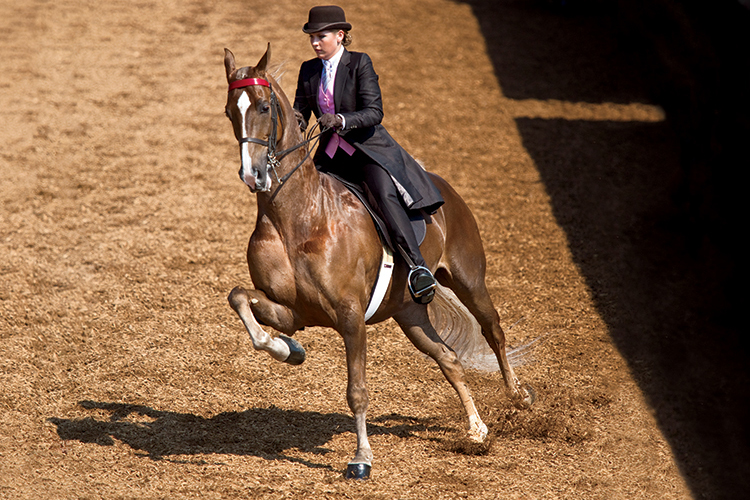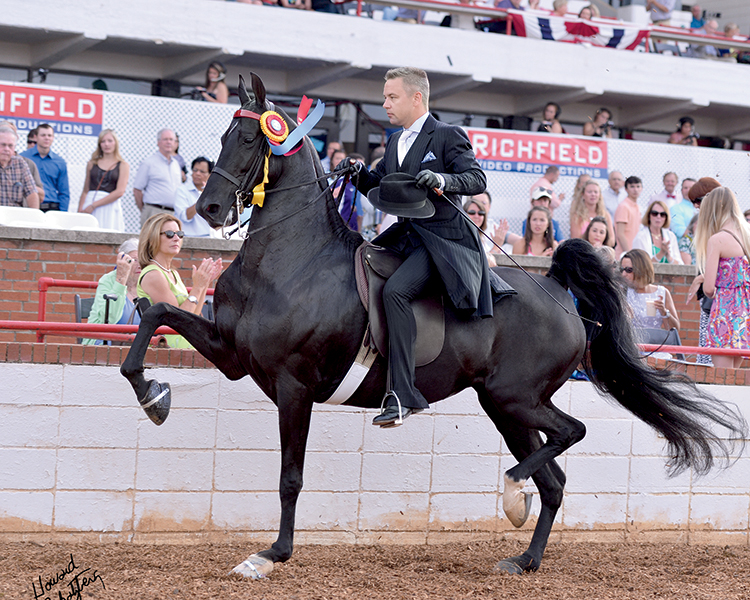Home > Kentucky > Kentucky Agritourism > Kentucky Equestrian Enterprise
Kentucky Equestrian Enterprise

Horses are an iconic symbol of Kentucky, and the equine industry is as important to the state as the limestone-rich water is to nurturing these majestic animals. While the Kentucky Derby is one of the most famous sporting events in the world, Kentucky is host to many other equine competitions that attract visitors and attention from every continent.
Horses drive $3 billion in annual economic impact in Kentucky and create around 41,000 jobs. The racing and breeding industry offers the biggest economic impact on the state, but behind that, the largest equine attraction comes from something that Kentucky has worked hard to develop as a niche market: horse competitions.
According to a study conducted by the University of Kentucky in partnership with the Kentucky Horse Council, the Governor’s Office of Agricultural Policy and the Agricultural Development Board, small horse events with about 200 attendees generate $21,400. Large events with 2,000 attendees can generate up to 10 times that amount.
A Culture Rich In Tradition
For larger events, well established in the tradition of the equestrian culture of the Bluegrass State, that influence can be even greater. The Rolex Kentucky Three-Day Event at the Kentucky Horse Park in Lexington drew more than 50,000 spectators in 2013 and brought $14.2 million into Kentucky, according to the economic study.
The only four-star equestrian competition held outside of Europe, Rolex Kentucky takes place the last weekend of April.
Over three days each year, horse and rider pairs compete in three phases: Dressage, during which competitors perform prescribed movements that test the gaits, suppleness and obedience of the horse; Cross-Country, an exhilarating open-air test that requires horse and rider to negotiate at gallop course obstacles; and Jumping, which tests the competitors’ abilities to clear an indoor course of obstacles.
In April 2014, Rolex Kentucky hosted more than 70 competitors from seven countries, and more than 78,000 spectators attended from all over the world.
“It really is an incredible event to bring people to Kentucky,” says Susan McDaniel, director of marketing for the Rolex Kentucky Three-Day Event. “Our competitors look forward to visiting the state every year, and they always have great things to say, not just about the event but about the hospitality and beauty they find here.”
Helping Others
Equestrian eventing serves native organizations as well. In 1936, the Junior League of Lexington was trying to raise money to support its community work programs. The first horse show in 1937 had a budget of $500 but brought a crowd of 5,000, $10,000 in prize money and 216 horses from 16 states.
Today, the horse show has grown to be the world’s largest outdoor American Saddlebred show and the first leg of the Saddlebred Triple Crown. The annual event attracts 1,000 world-recognized competitors from the U.S. and Canada and has raised more than $4 million for charitable and civic organizations in central Kentucky, and it generates more than $5 million in revenue for local merchants during the event.
Horse Capital Of The World
Kentucky is also an ideal place to host equestrian events because of its existing industry infrastructure and deep understanding of the animal.
The state hosts services ranging from stabling, transportation and training, to health and wellness and equine medicine. Professionals in these areas are accessible to competitors and event organizers, Carter says.
Even in an industry that creates about $1.4 billion in new income paid to workers, profits to businesses and dividends to shareholders, and generates about $134 million in tax revenue for the state, tradition still reigns as top priority for those in the business.
“When people think about Kentucky, they think about horses,” McDaniel says. “That isn’t going to change, so we should do all we can to make these events the best they can be and continue to introduce visitors to the rich equestrian culture we have in the Horse Capital of the World.”




![Kentucky Equestrian [INFOGRAPHIC]](https://eadn-wc01-4177395.nxedge.io/wp-content/uploads/2020/05/Screen-Shot-2014-11-12-at-4.23.48-PM.png)
